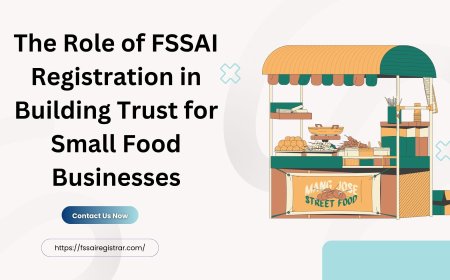How to Shop Handmade Goods at the Mayfest Vendor Booths
How to Shop Handmade Goods at the Mayfest Vendor Booths Mayfest is more than a seasonal celebration—it’s a vibrant cultural gathering where artisans, craftspeople, and independent creators come together to showcase their handmade goods. From hand-thrown ceramics and hand-stitched textiles to small-batch candles and hand-forged jewelry, the vendor booths at Mayfest offer a curated selection of one-
How to Shop Handmade Goods at the Mayfest Vendor Booths
Mayfest is more than a seasonal celebration—it’s a vibrant cultural gathering where artisans, craftspeople, and independent creators come together to showcase their handmade goods. From hand-thrown ceramics and hand-stitched textiles to small-batch candles and hand-forged jewelry, the vendor booths at Mayfest offer a curated selection of one-of-a-kind items you won’t find in mainstream retail. Shopping at these booths isn’t just about making a purchase; it’s about connecting with the stories behind the objects, supporting local economies, and preserving traditional craftsmanship in an age of mass production.
Yet, for many first-time attendees, navigating the bustling aisles of Mayfest vendor booths can feel overwhelming. With dozens of stalls, each brimming with unique offerings, knowing where to start, how to evaluate quality, and how to engage meaningfully with vendors can make all the difference. This guide is designed to transform your Mayfest experience from chaotic browsing into a purposeful, rewarding journey of discovery. Whether you’re searching for a meaningful gift, a personal keepsake, or simply want to appreciate the artistry behind handmade goods, this tutorial will equip you with the knowledge, strategies, and confidence to shop like a seasoned connoisseur.
By the end of this guide, you’ll understand not only the practical steps to navigate the booths effectively but also the deeper values that make shopping handmade at Mayfest a meaningful act—one that supports sustainability, creativity, and community.
Step-by-Step Guide
Plan Ahead: Research the Vendor List
Before you even step onto the Mayfest grounds, take 15–20 minutes to review the official vendor list. Most Mayfest events publish a digital directory on their website a week prior to the event. This list typically includes vendor names, booth numbers, categories (e.g., ceramics, woodwork, textiles, jewelry), and sometimes even short bios or photos of the artisans. Use this to identify the makers whose work aligns with your interests.
For example, if you’re drawn to natural dyes and organic fibers, search for vendors labeled “handwoven textiles” or “plant-dyed scarves.” If you’re looking for functional art, prioritize booths featuring pottery, cutting boards, or metalware. Mark 5–7 booths as your top targets. This prevents aimless wandering and ensures you don’t miss the makers you’re most excited to support.
Arrive Early for First Access
Mayfest vendor booths often sell out of popular items by midday, especially during peak seasons. Arriving in the first hour after opening gives you the best selection and the most time to engage with vendors without crowds. Early arrival also means quieter interactions—ideal for asking detailed questions about materials, techniques, or customization options.
Many artisans create small batches and restock infrequently. If you see a piece you love, don’t assume it will be available later. The first-come, first-served nature of handmade goods means urgency can be an asset. Bring a reusable tote or backpack to carry your finds comfortably, and consider bringing a small notebook to jot down booth numbers or names for later reference.
Approach with Respect and Curiosity
Unlike shopping in a department store, Mayfest vendor booths are run by individuals who pour their time, skill, and emotion into their work. Approach each booth with genuine interest. Greet the maker with a smile and a simple, “Hi, I love what you’re doing here—can you tell me about your process?”
Most artisans welcome these conversations. They’re not just selling a product; they’re sharing a craft. Asking thoughtful questions not only enriches your experience but also helps you understand the value behind the price. A hand-carved wooden bowl might cost more than a factory-made one, but when you learn it was shaped from reclaimed oak, sanded by hand over 18 hours, and finished with food-safe beeswax, the investment becomes clear.
Evaluate Quality with Your Senses
Handmade goods are defined by their imperfections—and those imperfections are signs of authenticity. Rather than seeking uniformity, look for evidence of care and intention. Use your senses:
- Sight: Examine seams, glazes, carvings, and finishes. Are they even? Are there signs of tool marks or brushstrokes that suggest human hands rather than machines?
- Touch: Feel the weight, texture, and smoothness. Does the ceramic have a cool, dense quality? Is the leather supple or stiff? Does the fabric drape naturally?
- Smell: Natural materials like beeswax, linseed oil, or untreated wood often have subtle, earthy scents. Avoid items with strong chemical odors—these may indicate synthetic finishes or low-quality materials.
- Sound: Tap a ceramic piece gently. A clear, ringing tone suggests proper firing and no hidden cracks. A dull thud may indicate structural flaws.
These sensory cues help you distinguish between high-quality handmade items and mass-produced imitations marketed as “artisanal.”
Ask About Materials and Process
Transparency is a hallmark of ethical handmade production. Don’t hesitate to ask:
- “Where do you source your materials?”
- “How long does it take to make one piece?”
- “Is everything you use sustainably harvested or recycled?”
- “Do you make everything yourself, or do you collaborate with others?”
Answers like “I harvest my own clay from a nearby riverbed” or “Each scarf takes 40 hours to weave on a traditional loom” signal authenticity. Vendors who hesitate or give vague answers may be reselling imported goods rather than creating them. Remember: the story behind the object is part of its value.
Negotiate Thoughtfully—But Don’t Bargain
Handmade goods are priced based on labor, material cost, and fair wage—not markup. While vendors rarely haggle, some may offer small discounts for multiple items or bundle deals. If you’re purchasing three or more pieces, politely ask, “Do you offer a discount for multiple items?”
Never demand a lower price. Artisans often work long hours for modest returns. A respectful request for a bundle discount is appropriate; a demand for a “deal” is not. If a price feels high, consider whether you’re paying for convenience (a retail store) or for craftsmanship (a maker). The latter is an investment in quality and ethics.
Pay with Cash or Mobile Payment
While many vendors now accept digital payments via Venmo, Cash App, or Square, not all do. Some artisans still prefer cash for simplicity and to avoid transaction fees. Bring small bills and coins. If you’re unsure, ask, “Do you accept mobile payments or cash?”
Carrying cash also encourages mindful spending. When you physically hand over bills, you’re more aware of your purchase’s impact. If you’re buying multiple items, ask the vendor to total them up together—you may qualify for a discount or free wrapping.
Ask About Care Instructions and Customization
Handmade items often require special care to maintain their beauty. Ask:
- “How should I clean or maintain this?”
- “Is it dishwasher-safe, oven-safe, or hand-wash only?”
- “Can you make this in a different color, size, or material?”
Many makers are happy to create custom orders on the spot or take your contact info for future commissions. If you love a piece but it’s sold out, ask if they’re taking pre-orders for the next batch. This builds a relationship—and ensures you’ll be first in line next time.
Document Your Experience
Take a photo of the vendor’s name, booth number, and product (with permission). Many artisans don’t have websites or social media, so this is your only record. Later, you can search their name online or tag them in a post to show support. Consider writing a short note to each maker you meet—thank them for their time and craftsmanship. These small gestures mean more than you know.
Leave Room for Serendipity
While planning helps, some of the best finds are unexpected. Allow time to wander without a list. You might stumble upon a potter who uses local river clay, a weaver who learned her craft from her grandmother, or a candlemaker who blends essential oils from her own garden. These are the moments that make Mayfest unforgettable. Let curiosity lead you as often as your checklist does.
Best Practices
Support Local, Not Just “Handmade”
Not all “handmade” labels are equal. Some vendors import components from overseas and assemble them locally. Ask where materials originate. Prioritize makers who source locally—clay from regional quarries, wool from nearby farms, wood from sustainably managed forests. This reduces carbon footprints and strengthens regional economies.
Buy Less, Choose Well
One thoughtfully made item holds more value than five disposable ones. Resist impulse buys. Ask yourself: “Will I still love this in a year?” “Does it serve a purpose in my life?” “Does it reflect my values?” Handmade goods are meant to be cherished, not collected. Choose pieces that resonate emotionally and functionally.
Respect the Space
Vendors often work in tight booths with limited storage. Don’t touch items unless invited. Avoid leaning on display tables or blocking foot traffic. Keep children close and bags off the floor. A respectful atmosphere allows everyone to enjoy the experience.
Bring a List of Priorities
Write down your top 3–5 categories: “ceramics for kitchen,” “jewelry for gifts,” “textiles for home.” Stick to them. It’s easy to get distracted by beautiful objects, but staying focused ensures you leave with items you truly love—not just what looked nice under the sun.
Be Mindful of Pricing
Handmade goods cost more because they’re made by hand. A $40 hand-thrown mug may seem expensive next to a $10 mass-produced one, but consider this: the $10 mug was made in a factory by someone earning $2/hour. The $40 mug was made by an artist working 10 hours at a fair wage, using ethically sourced materials. The real cost isn’t the price tag—it’s the hidden cost of exploitation and waste.
Engage Beyond the Purchase
Follow makers on Instagram or sign up for their newsletters. Share their work with friends. Leave a review if the event has a feedback system. Your advocacy helps them grow. A single post or recommendation can lead to a new customer—and that’s how artisan communities thrive.
Bring a Reusable Bag and Water Bottle
Mayfest is an eco-conscious event. Bring your own tote to avoid plastic bags. Many vendors use compostable packaging, but reducing waste at the source is even better. Stay hydrated and avoid single-use cups. Your choices reflect the values of the makers you support.
Don’t Rush the Experience
Set aside at least two hours. Rushing through booths turns shopping into a chore. Slow down. Sit on a bench. Watch a potter throw clay. Listen to a weaver explain her patterns. Mayfest is as much about connection as it is about commerce. Let the rhythm of the event guide you.
Ask About Returns or Exchanges
Unlike retail stores, most handmade vendors don’t offer returns. However, some may accept exchanges if an item is damaged or flawed. Always ask upfront: “What’s your policy if something arrives broken?” This prevents disappointment later. If a vendor offers a warranty or repair service, consider it a sign of confidence in their work.
Support Emerging Artists
Look for booths labeled “New Vendor” or “First-Time Maker.” These artists often offer lower prices and are eager for feedback. Your purchase gives them validation and momentum. Supporting newcomers helps diversify the handmade landscape and ensures innovation continues.
Tools and Resources
Mayfest Official App or Website
Most Mayfest events offer a mobile app or downloadable PDF vendor directory. Use it to map booth locations, filter by category, and get real-time updates on pop-up demos or live demonstrations. Bookmark the site before you go.
Handmade Product Checklist
Create a simple checklist before attending:
- ☐ Ceramic vessels
- ☐ Handwoven textiles
- ☐ Natural soap or candles
- ☐ Wooden kitchenware
- ☐ Handmade jewelry
- ☐ Art prints or stationery
- ☐ Leather goods
- ☐ Plant-based dyes
Check off items as you find them. This keeps you focused and helps you avoid buyer’s remorse.
Smartphone Camera and Notes App
Take photos of each item you’re considering, along with the vendor’s name and booth number. Use your phone’s notes app to jot down key details: “Blue glaze, 8” bowl, made with local clay, $38.” Later, you can compare prices and stories side by side.
Reusable Tote and Small Wallet
Bring a durable, foldable tote bag that fits in your pocket. Keep cash in a small, secure wallet with denominations under $20. Avoid bulky purses that clutter your hands as you browse.
Portable Charger
With so much photo-taking and app use, your phone can drain quickly. A compact power bank ensures you stay connected and can capture every meaningful moment.
Local Artisan Directories
After Mayfest, explore regional craft networks like:
- Handmade Nation (handmadenation.com)
- Etsy’s “Local Artisans” filter
- Your city’s craft council website
- Instagram hashtags like
MayfestArtisans or #[YourCity]Made
These platforms help you continue supporting makers long after the festival ends.
Journal or Sketchbook
Bring a small notebook to record impressions. Write down which vendor made you pause. What did they say that moved you? Which piece felt like it was made just for you? These reflections become treasured memories—and future gift ideas.
QR Code Scanner App
Some vendors include QR codes linking to their online stores or YouTube videos showing their process. A free QR scanner app lets you access these instantly without typing URLs.
Real Examples
Example 1: The Ceramicist Who Grew Her Own Clay
Lena, a ceramicist from rural Vermont, had a booth at Mayfest with a simple sign: “Clay from the Riverbank.” Her bowls had irregular rims and subtle speckles. When asked, she explained she’d spent two years collecting and refining clay from a nearby riverbed, then fired each piece in a wood-burning kiln she built herself. One bowl, glazed with ash from her fireplace, sold for $65. A visitor bought it, then returned the next day to commission a matching set. Lena now has a six-month waiting list. Her story wasn’t just about pottery—it was about patience, place, and persistence.
Example 2: The Weaver with a 70-Year-Old Loom
At a Mayfest in Portland, a woman named Miriam sat behind a loom older than most attendees’ grandparents. She wove scarves using wool from her neighbor’s sheep, dyed with onion skins and walnut husks. Each scarf took 14 hours. She sold them for $85. A young couple bought two—one for their mother, one for themselves. Years later, they still wear them. Miriam never advertised. Her booth was quiet, but her work spoke volumes. People returned year after year, not just for scarves, but for the ritual of meeting her.
Example 3: The Candlemaker Who Turned Loss into Light
A vendor named Daniel sold soy candles infused with lavender and cedar. He’d started making them after losing his wife to illness. Each scent reminded him of her garden. He didn’t sell for profit—he gave 20% of proceeds to a local hospice. One candle, labeled “Her Garden,” sold out in two hours. A woman bought three and returned to say, “My mother loved this scent. Thank you for making something beautiful out of grief.” Daniel’s candles weren’t just fragrance—they were healing.
Example 4: The Blacksmith Who Made a Spoon for a Child
A blacksmith named Rafael had a booth with miniature spoons forged from reclaimed steel. He told a little girl that each spoon was made for someone who loved to eat slowly. She chose one with a leaf design and asked if she could name it. He said yes. She named it “Lila.” Rafael later mailed her a certificate with Lila’s name engraved on it. That spoon became a family heirloom. He didn’t make it for mass appeal—he made it for connection.
Example 5: The Printer Who Used Hand-Carved Blocks
Yuki, a printmaker from Japan, used traditional woodblock techniques to create tea towels and greeting cards. Each design took weeks to carve. Her booth had no price tags—she asked visitors to name their own price. Many paid double. She said, “I don’t sell art. I share moments.” One card, featuring a single crane in flight, was bought by a woman who later sent Yuki a photo of it framed above her mother’s hospital bed. “It reminded her she was still here,” the woman wrote. That card cost $12. Its impact was infinite.
FAQs
What’s the difference between handmade and mass-produced goods?
Handmade goods are created individually by artisans using traditional tools and techniques, often with natural or locally sourced materials. Each piece has slight variations that reflect the maker’s touch. Mass-produced goods are made in factories using machines, with standardized designs and synthetic materials. Handmade items are slower to produce, more durable, and carry cultural and emotional value.
Why do handmade items cost more?
Handmade items reflect the true cost of labor, materials, and time. Artisans pay for quality supplies, studio space, tools, and their own living expenses. They don’t benefit from bulk discounts or overseas labor. The price is a fair reflection of value—not markup. You’re paying for skill, sustainability, and story.
Can I ask for a custom order at Mayfest?
Yes! Many vendors welcome custom requests. Ask if they take commissions, what turnaround times look like, and whether they need a deposit. Some may even sketch a design on the spot. Custom orders are a wonderful way to own something truly unique.
What if I don’t find anything I like?
That’s okay. Mayfest isn’t about buying—it’s about experiencing. Take time to observe, listen, and learn. You might not leave with a bag full of items, but you’ll leave with stories, inspiration, and a deeper appreciation for craftsmanship. Sometimes the most valuable thing you take home is a new perspective.
Do all vendors accept credit cards?
No. Many still prefer cash or mobile payments like Venmo or Cash App due to low transaction fees. Always carry some cash in small bills. Ask vendors upfront about payment methods to avoid awkward moments.
Is it okay to take photos of the items or the makers?
Always ask first. Most makers are happy to be photographed—especially if you tag them later. But some may have copyright concerns or be in the middle of a demonstration. Respect their boundaries.
How can I support these makers after Mayfest?
Follow them on social media, leave reviews, refer friends, and share their work. Many rely on word-of-mouth. If they have an online store, buy from them again. Even a simple “I loved your work at Mayfest” message can mean the world.
Are handmade goods durable?
Yes—when made well. Artisans use high-quality materials and time-tested techniques to ensure longevity. A hand-thrown ceramic mug can last decades with proper care. A hand-stitched leather bag may outlive its owner. Durability is part of the promise of handmade.
What if I break something I bought?
Most handmade items aren’t returnable, but many makers offer repair services or can advise on restoration. Some even have “lifetime care” policies. Ask before you buy. If a piece breaks, don’t discard it—reach out. Often, a small repair can restore its beauty.
How do I know if a vendor is truly handmade?
Ask questions. Look for signs of handwork: uneven glazes, tool marks, asymmetry, natural variations. Check if they make everything themselves. Avoid vendors who say “handmade” but can’t describe their process. Authentic makers are proud to explain their craft.
Conclusion
Shopping for handmade goods at Mayfest vendor booths is not merely a transaction—it’s a quiet act of resistance against homogenization, a celebration of individuality, and a reaffirmation of human creativity. Each piece you choose carries the fingerprints of its maker, the rhythm of their labor, and the quiet dignity of a life devoted to craft. When you buy from these booths, you’re not just acquiring an object; you’re becoming part of a legacy.
The steps outlined in this guide—research, presence, curiosity, respect, and mindfulness—are not just tactics for shopping. They are practices for living with intention. In a world that rushes toward the next trend, the handmade reminds us to slow down, to value quality over quantity, and to honor the hands that shape our world.
Mayfest will come and go. The booths will close. But the relationships you build, the stories you hear, and the objects you bring home will linger. Let them be more than souvenirs. Let them be reminders—to choose wisely, to support deeply, and to never stop seeing the beauty in the handmade.
Next year, return—not just to shop, but to reconnect. To listen. To learn. To give space to the quiet, enduring magic of human hands.



































